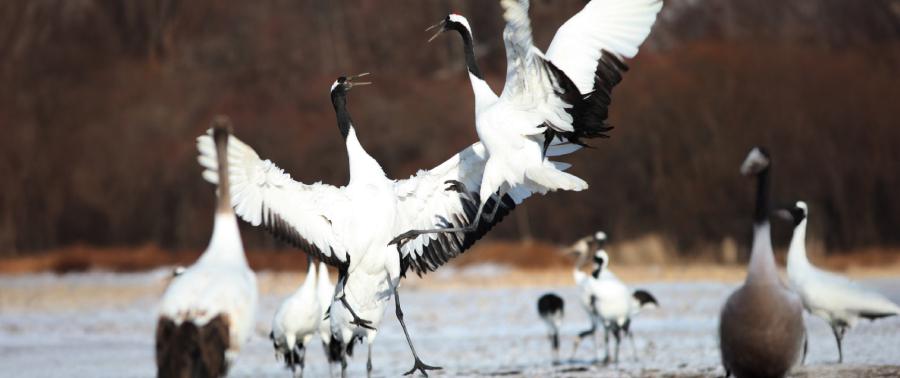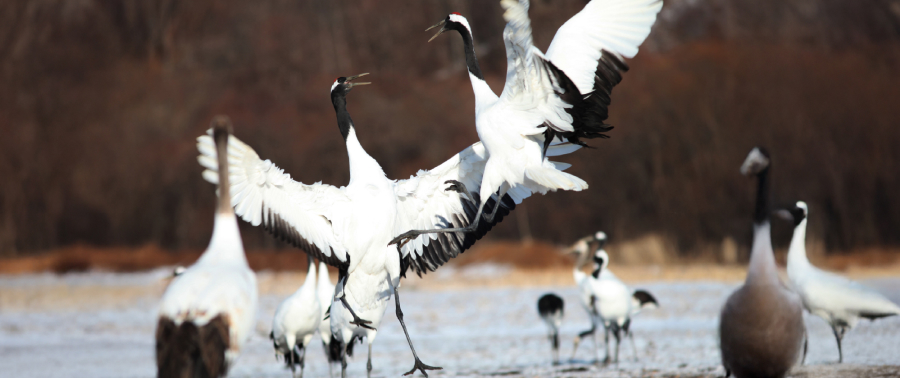

Each autumn, the skies above Ukraine come alive with a rhythmic flutter – flocks of storks, swallows, cranes, and countless others embarking on their long journeys south. Their invisible routes form a vast network connecting continents, climates, and ecosystems. These migrations are one of nature’s most breathtaking phenomena – and one of the most fragile.
A Global Day for the winged travelers
Every year, the world celebrates World Migratory Bird Day – an international environmental event held twice a year, in May and October, marking the peak migration seasons. In 2025, the autumn date falls on October 11.
The initiative, launched in 2006 under the UN Environment Programme (UNEP), reminds us of the need to protect migratory species. Since 2018, the day has been observed twice a year – in spring for homecoming, and in autumn for departure.
The 2025 theme – “Building Bird-Friendly Cities and Communities” – highlights how urban growth and infrastructure pose new challenges for migratory birds: loss of habitats, collisions with glass buildings, noise and light pollution, wars, and climate change.
Cities can become safe havens — if we plant trees, preserve green corridors, and dim our lights during migration nights.
Carpathian birds: Bukovel’s migratory guests
The forests and meadows surrounding Bukovel host over 40 migratory bird species. Among them: white and black storks, gray cranes, barn and city swallows, wagtails, whitethroats, woodcocks, starlings, sandpipers, terns, harriers, and eagles.
Storks can travel up to 10,000 km, connecting the Carpathians with Africa. Swallows – symbols of spring – journey as far as South Africa, while starlings winter in Asia Minor and North Africa.
How birds find their way
Migration is a masterpiece of evolution. Birds read the stars, sense Earth’s magnetic field, follow familiar scents, and ride thermal air currents with astonishing precision. Studies reveal that climate change is shifting their traditional routes, forcing them to adapt. GPS tracking of storks and cranes shows how their pathways evolve each year.
The dangers of the journey
From deforestation to light pollution, from war to climate shifts – modern life challenges migratory birds in countless ways. Over 40% of species worldwide are now at risk of extinction.
Why bird migration matters
Migratory birds are vital to the planet’s balance: they pollinate plants, disperse seeds, regulate insect populations, and serve as indicators of ecological health. When one species disappears, entire ecosystems are thrown off balance.
Amazing facts about migration
- The Arctic tern travels up to 90,000 km yearly – the longest migration on Earth.
- The bar-tailed godwit flies over 11,000 km nonstop, burning half its body weight in flight.
- Each year, more than 5 billion birds migrate between Europe, Asia, and Africa.
- Cranes fly in graceful V-formations to conserve up to 25% of their energy.
How we can help
- Protect wetlands and meadows.
- Reduce night lighting during migration seasons.
- Avoid deforestation during nesting periods.
- Provide nesting boxes and clean water sources.
- Educate children about protecting wildlife.
World Migratory Bird Day is about more than birds – it’s about our shared responsibility for life on Earth. Bukovel, part of this great natural network, continues to nurture a resort that is open to both people and nature – where even a fleeting wing finds its place.
Let’s protect the birds – and with them, the future of Ukraine.